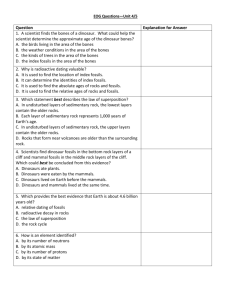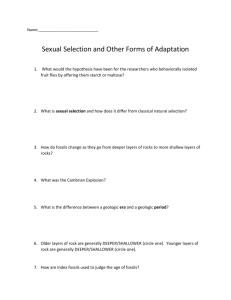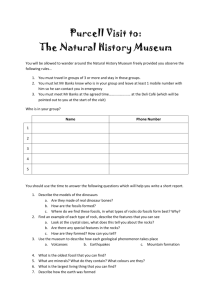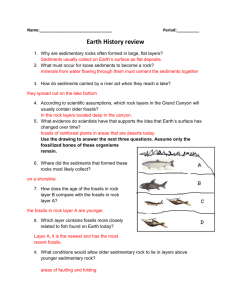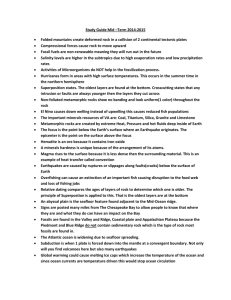Unit4PracticeQuestions
advertisement
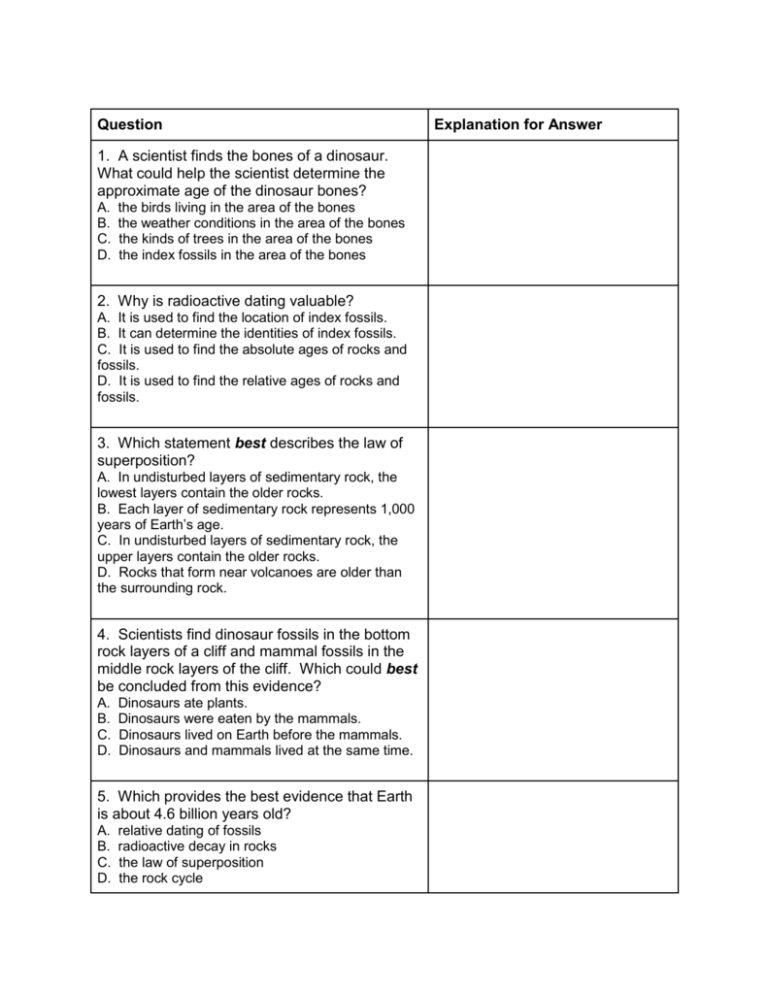
Question 1. A scientist finds the bones of a dinosaur. What could help the scientist determine the approximate age of the dinosaur bones? A. B. C. D. the birds living in the area of the bones the weather conditions in the area of the bones the kinds of trees in the area of the bones the index fossils in the area of the bones 2. Why is radioactive dating valuable? A. It is used to find the location of index fossils. B. It can determine the identities of index fossils. C. It is used to find the absolute ages of rocks and fossils. D. It is used to find the relative ages of rocks and fossils. 3. Which statement best describes the law of superposition? A. In undisturbed layers of sedimentary rock, the lowest layers contain the older rocks. B. Each layer of sedimentary rock represents 1,000 years of Earth’s age. C. In undisturbed layers of sedimentary rock, the upper layers contain the older rocks. D. Rocks that form near volcanoes are older than the surrounding rock. 4. Scientists find dinosaur fossils in the bottom rock layers of a cliff and mammal fossils in the middle rock layers of the cliff. Which could best be concluded from this evidence? A. B. C. D. Dinosaurs ate plants. Dinosaurs were eaten by the mammals. Dinosaurs lived on Earth before the mammals. Dinosaurs and mammals lived at the same time. 5. Which provides the best evidence that Earth is about 4.6 billion years old? A. B. C. D. relative dating of fossils radioactive decay in rocks the law of superposition the rock cycle Explanation for Answer 6. How is an element identified? A. by its number of neutrons B. by its atomic mass C. by its number of protons D. by its state of matter
